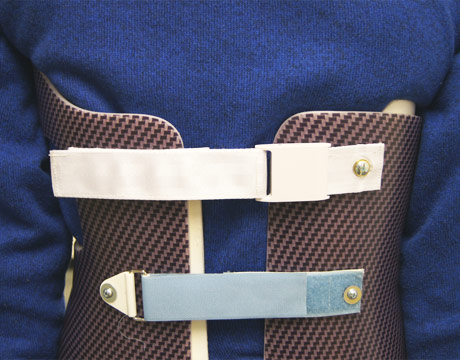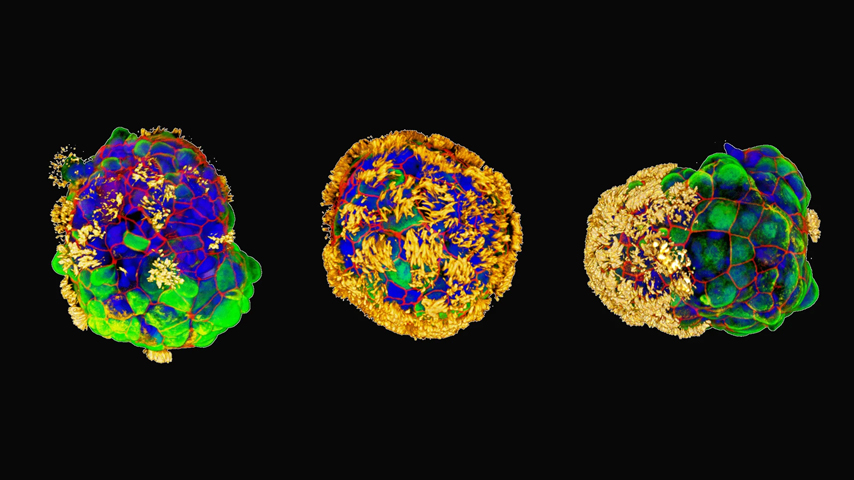A Smarter Treatment for Scoliosis
A Smarter Treatment for Scoliosis


Scoliosis back brace with “Smart Strap.” Image: Curvy Girls Scoliosis Support Group
We all remember getting ready for school in the morning: picking out what clothes to wear, brushing our hair. But how many remember having to start the day painfully moving around with an uncomfortable back brace? For many children with scoliosis, it’s a disease that can affect them physically but also psychologically, wearing them down mentally with the difficulties of using a brace.
“The idea is that the brace will allow you to avoid getting surgery, something that can be costly but that also has risks,” says Levi DeLuke.
He should know. DeLuke went through both the brace and the surgery. Graduating with a B.A. in mechanical engineering from Yale University, he’s part of a team hoping to improve the situation.
The team’s work originated with an engineering fellowship at Yale University. “We were interested in doing something related to scoliosis and we knew it was vital to spend a lot of time talking to doctors, parents, and kids,” he says. “We realized from this work that children often are told to wear a brace all day and often don’t do it and even wear it incorrectly. This increases the chance of needing corrective surgery. We wanted to create a device to gather information on the treatment but encourage them to wear it and provide helpful feedback for all.”
Using a “Smart Strap,” they replace the existing strap and embed it with sensors. “It reveals how long it’s being worn and the level of tightness,” says DeLuke, who is also chief technical officer and co-founder of Wellinks, the company created that is slated to put out the strap. “The first prototype was hacked together. We used an Arduino to service the processor, and you have the accelerometer and other parts.”
The software uses mobile technology and syncs the data to see progress updates, he explains. The smartphone application that downloads the data from the device shows, for example, how tight the strap is and how tight the strap needs to be pulled. All the data is sent to the web where a clinician can log in to a dashboard. “They can evaluate and set different tightness values,” he says. “This tells you where they want the strap to be.”
Awarded $100,000 through the YEI Innovation Fund, the reaction during this journey has been strong, DeLuke says, and they’re excited about getting closer to bringing it to market. “We’ve done trials with clinical partners and are in the process of our first manufacturing run right now and are aiming to start sales next summer,” he says. “The surgeries might be upwards of $100,000 to insurance and you can lose a lot of flexibility from fusing your spine. If we can help children and parents with this, that would be very rewarding to us.”
Learn about the latest trends in bioengineering at ASME’s Global Congress on NanoEngineering for Medicine and Biology.
We’ve done trials with clinical partners and are in process of our first manufacturing run right now and are aiming to start sales next summer.Levi DeLuke, Wellinks



